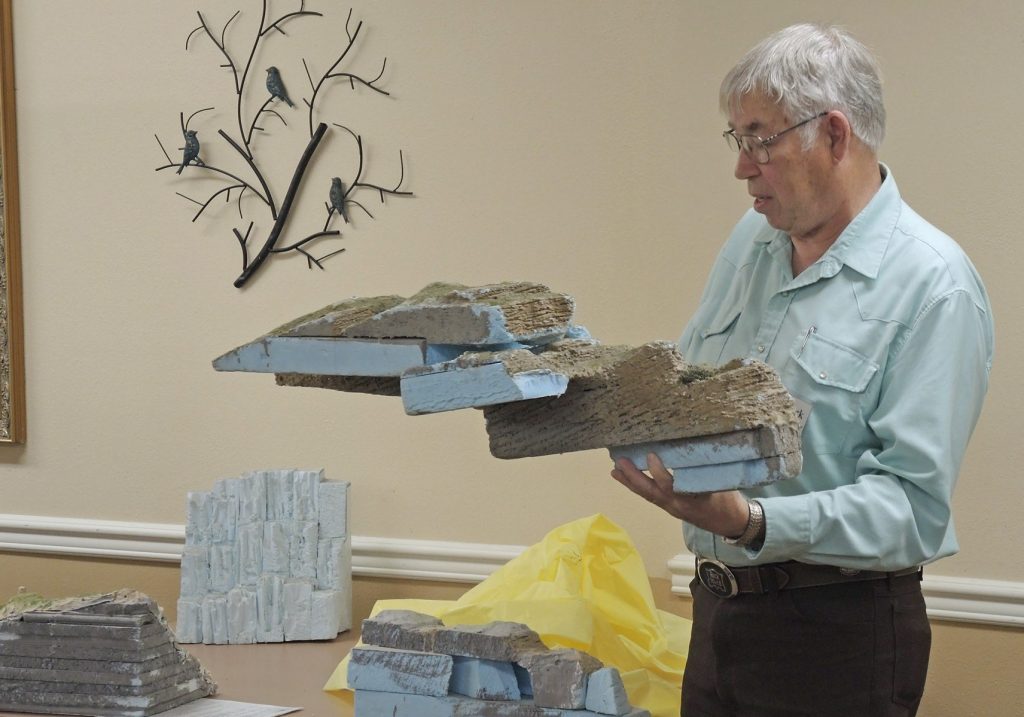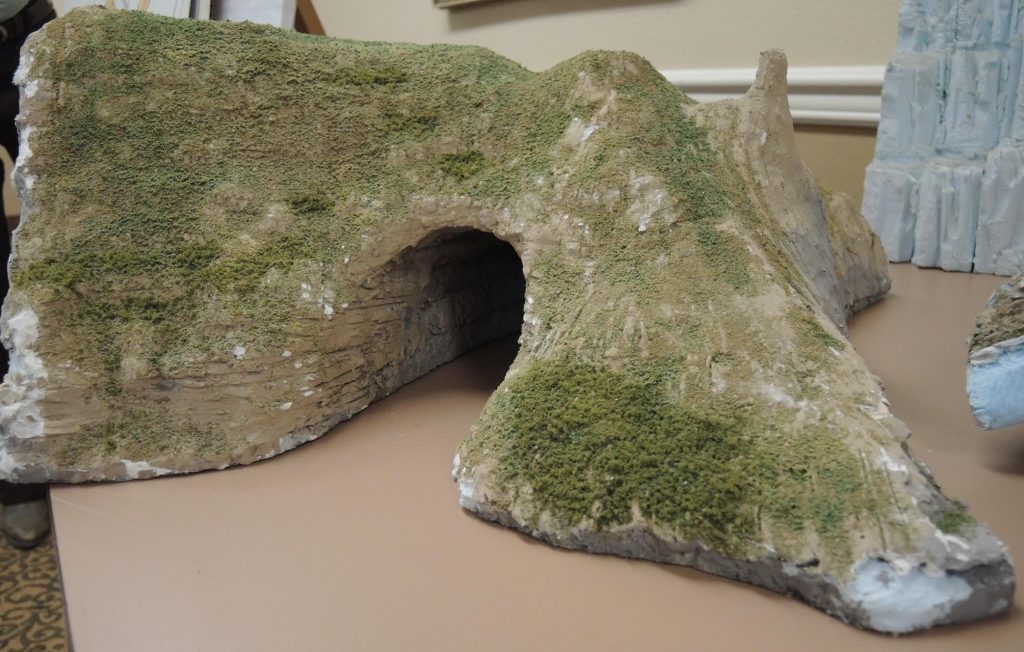Article and Photos by Rich Thom
Cliff Aaker, subbing for clinic chair Rich Blake, welcomed 24 to the SV&W NMRA Clinic’s October meeting. Cliff welcomed first-time attendees Roy and Penny Andrukat, Oak Harbor residents modeling in n-scale; we hope they become regulars. Sad news about the Anacortes and Fidalgo Model Railroad Club, whose members are long-time clinic contributors: the lease on their space has been terminated by the building’s owner, a familiar story to many clubs. The club’s annual Fall Open House on Nov 2nd and 3rd will likely be their last. We hope modelers from all over the area will consider paying a visit to the club’s HO-scale 24’ x 45’ layout, featuring Many scratchbuilt bridges and other structures. Hours each day are 10 am to 4 pm; the address is 419 Q Avenue (intersection of 5th and Q), Anacortes.
The evening’s clinician was MMR Mark Malmkar, who reprised highlights of several clinics he presented over the years back in Nebraska, from which Mark and wife Chris relocated to Whidbey Island. Mark first covered diverse topics including: layout design for 4’ x 8’ tabletops; locomotive wheel arrangements; benchwork types; wiring basics; passenger car eras and car types; and dining car window arrangements. Mark is an expert on passenger cars, Pullman Company history and its monopoly on sleeping car services, and the complex Pullman routes and innumerable car variations, and always has good examples and anecdotes to share. We were even pulled back into that era by Mark’s use of flip-charts—if anyone can remember those! (In his defense, he has also given clinics using Powerpoint.)

Next, Mark focused on his extensive use of insulating foam scenery (Fig 1). Mark has managed a somewhat rare feat: He packed up and moved his entire Nebraska model railroad to Washington, and is in the process of re-assembling it, with some shifts and rotations of sections here and there to fit the new space. One feature which made this easier—or even possible at all—was his extensive use of foam scenery rather than plaster hardshell. Its light weight and ease of creating large, easily-removable scenery sections and smaller liftouts is well-known. Mark described the tools and adhesives he used to laminate 1” – 1 and ½” – and 2” sheets into landforms, the rasps and carving tools used to sculpt it, and materials to overcoat it to form the final scenic form. Fig 2 shows one of several liftouts Mark brought in to show, this one with a tunnel. Thanks to Mark for an interesting and entertaining presentation.

Rich

No Comments Yet